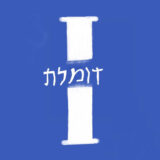The field of embroidery is the crystallization of human wisdom for thousands of years. It is also the first time in thousands of years that humans have thought of using embroidery techniques to feed AI.
The Canvas embroidery database, which consists of 230 horizontal lines, straight lines, oblique lines and semicircles, is composed of three parts: hand-drawn, hand-finished drawings, and anatomical computer drawings. There are several potential technological applications:
1. Generative AI Image Processing: These patterns made up of simple lines and shapes are very suitable for training generative AI models, especially in image generation and recognition. Generative AI can learn to generate new patterns from these basic geometric shapes and perform creative design, which can then be used to generate new design drawings, such as digital art, embroidery design, textile pattern generation, graphic templates or artwork. For example:
• Automatic design tools: AI can use these basic shapes to create designs, generate new embroidery patterns, logo designs, and even be applied to digital manufacturing processes in industrial design.
• Image style transfer: These graphics can be used in AI image style transfer to apply these shapes and pattern styles to other types of images, such as generating embroidery-style pictures from real photos.
• Symbol learning: AI can learn these basic graphics and use them for pixel-level image recognition or new creations.
• Image generation for deep learning networks: These embroidery and drawings can become training data for design generative tools.
2. Other technological uses
•CAD/CAM system design: These patterns can be used for product design and manufacturing in the **computer-aided design and manufacturing (CAD/CAM)** system, especially in the fields of embroidery, textiles, or structural engineering. These patterns can be used to simulate embroidery design or fabric structure.
• Textile design and manufacturing: These embroidery patterns can be applied in the textile industry, especially in automated equipment such as digital embroidery machines and digital printing machines, as design input for direct manufacturing.
• Digital manufacturing and 3D printing modeling: These data can be applied to digital manufacturing technologies such as digital embroidery, laser cutting, or 3D printing. These simple geometric shapes can be used as design patterns in digital textile manufacturing and engraving.
• Teaching applications: In engineering and design disciplines, these basic graphic data can be used for teaching and practicing graphics, geometry, or drawing courses.
• Image recognition and annotation tools: If these data are well annotated, they can be used to train image recognition systems, especially in applications such as geometric shape recognition and drawing automation.
















